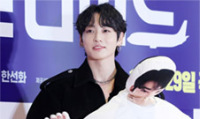Dress Codes: More Good or Evil?

Sophia Lee / Buford HS 10th Grade
Dress codes may come in many different forms. Private schools often have strict dress codes and require uniforms.
These uniforms often follow a distinct style: skirts, dress shirts, jackets/cardigans for girls and dress pants, dress shirts, ties, and jackets for boys.
However, other schools may implement dress codes which restrict the types of clothing students can wear. For example, schools limit the color of clothes, types of pants, (ex. No leggings), skirt and shorts lengths, necklines, and many more.
Do these strict dress codes/restrictions really help to improve student morale and eliminate discrimination? To an extent, yes. The uniforms definitely help reduce discrimination based on clothing choices.
It may also help lessen the burden on students as they have one less thing to worry about in the hectic mornings before school. So, the dress codes may help reduce discrimination based on what students decide to wear and this seems to be the purpose for implementing these dress codes, but what if these policies became the basis of discrimination based on other factors such as race or sex?
Tori Hwang, a junior from Marymount High School and Christina Park, a junior from the California Academy of Math and Science have expressed their opinions and concerns about this issue.
Tori says that she thinks “strict dress code rules should not be implemented in schools because these regulations mostly apply to girls, the reason being that everybody would get distracted by their revealing skin.”
The reason being that there should not be a reason for girls to conform to these ideals since it is not their fault. On the topic of discrimination and how it relates to these dress codes she says that “getting rid of dress code rules would not completely eliminate discrimination, but it would definitely be a step closer to doing the right thing.”
Christina has a similar opinion saying that, “implementing dress codes can be seen as necessary initially but when guidelines become more and more specific, it seems like schools are targeting certain groups.”
She also provides a possible solution to this issue by suggesting that “having a state standard or some way to unify it could eliminate the subjectivity of dress codes” and it could address the “‘unnecessarily strict’” dress codes in some areas. Explicitly addressing the possible targets of these rules, she says that they “tie to racial and sexual discrimination as some groups are subject to more criticism than others.”
<Sophia Lee / Buford HS 10th Grade>
스마터리빙
more [ 건강]
[ 건강]이제 혈관 건강도 챙기자!
[현대해운]우리 눈에 보이지 않기 때문에 혈관 건강을 챙기는 것은 결코 쉽지 않은데요. 여러분은 혈관 건강을 유지하기 위해 어떤 노력을 하시나요?
 [ 건강]
[ 건강]내 몸이 건강해지는 과일궁합
 [ 라이프]
[ 라이프]벌레야 물럿거라! 천연 해충제 만들기
 [ 건강]
[ 건강]혈압 낮추는데 좋은 식품
[현대해운]혈관 건강은 주로 노화가 진행되면서 지켜야 할 문제라고 인식되어 왔습니다. 최근 생활 패턴과 식생활의 변화로 혈관의 노화 진행이 빨라지고
사람·사람들
more
‘러브인뮤직’ 2025 성탄 음악회 성료
러브인뮤직은 지난 20일 LA 동양선교교회(담임 김지훈 목사)에서 가진 2025 성탄 작은 음악회를 끝으로 각 지역 봉사처별 올해 활동을 마무…

한인 향군 단체들 ‘진짜사나이’ 송년 행사
6·25 참전유공자회(회장 이재학)와 육군협회(회장 최만규)가 공동 주최한 2025 ‘진짜사나이’ 송년모임이 지난 19일 LA 용궁식당에서 한…
“취미생활로 다진 친목… 선후배들과 만든 모교사랑…
사진러브한인 사진 동호회 사진러브(회장 크리스 고)는 13일 용수산에서 송년모임을 갖고 한 해를 마무리하는 뜻깊은 시간을 가졌다. 이날 모임에…
[홀인원] 이상원 박사
일반외과 전문의 이상원(왼쪽) 박사가 지난 9일 뉴포트비치 소재 골프장 9번 홀(152야드)에서 레스큐 클럽으로 친 샷이 그대로 홀에 빨려 들…
[송년행사 게시판] 재미시인협회
재미시인협회(회장 지성심)는 오는 20일 오후 4시 가든스윗호텔에서 한 해를 마무리하며 동인지 ‘외지’ 제35집 출판 기념회와 ‘제23회 재미…
많이 본 기사
- 연말 ‘로드레이지’ 비극… 한인 총격 피살
- ICE 홈디포 급습단속에 한인 체포 2
- 성탄 연휴 폭우 ‘비상’ 주중 최대 6인치 온다
- 17년차에 17개 수상으로 증명했다..국민 여동생, 국민 가수, ‘국민 배우’까지 ‘아이유 천하’
- ‘거액 탈세·통관 사기’ 한인 통관브로커 중형
- 트럼프, 건강보험사들에 “보험료 내려… 1
- ‘SNS 검증’에 비자심사 적체… “최대 12개월 지연”
- 2026년을 기다리며… 타임스퀘어 벌써 새해맞이 분위기
- 빅애플 2025년 송년회
- 운전중 시비 끝에 총 맞아 40대한인 사망
- ‘재미 이산가족 상봉 지원법’ 트럼프 서명
- 재미 한인이산가족 상봉 길 열렸다
- ‘정치 손절’ 김흥국 “내년 선거 때 연락하지마..아들·딸 보기 부끄러워”
- 말살되고 있는 유럽의 성탄절 전통, … 1
- 아픔 딛고 첫 대상후보.. ‘말자’ 김영희 “X밭 걷고 있다 생각했는데..”
- 냉장고 문짝 1초 만에 조립… ‘다크 팩토리’ 성큼
- 재미 남서부 월남전 참전자회 송년회
- 관세로 준다던 미군 보너스 알고보니 ‘주택보조금’ 예산
- 미 자동차 업계… 전기차 접고 내연차로 회귀
- 연준, 올해 세 번째 금리 인하… 내 지갑엔 어떤 변화?
- 오늘 동지… 한인타운서 동지팥죽 함께 나누기 행사
- 간단한 혈액검사로 알츠하이머를 예측할 수 있을까
- 엡스타인 파일 공개했지만… 트럼프 사진 하루 만에 삭제
- 파워볼 로토 열풍 지속 오늘 잭팟 16억 달러로
- 한인 최초 NASA 우주비행사 조니 김… “우주서 김치·밥 그리웠다”
- 대만서 ‘외로운 늑대’ 흉기 난동… 15명 사상
- “태형아! 사랑해♥” 방탄소년단 뷔 韓팬들 성수동 대형 조형물→한강 선착장 5곳 생일 축하 초특급서포트
- 밴스에 줄선 찰리 커크의 ‘마가 제국’…차기 대선후보 띄우기
- 특검, ‘김건희 집사’ 김예성에 징역 8년 구형… “죄질 불량”
- 고물가에 연말 샤핑 ‘실속형’… 양말·커피·기저귀 선물
- [이민법 칼럼] 이민법 221(g)에 따른 비자 거부
- 국토장관 “영주권 추첨제도 전격 중단”
- 미국인 5명중 1명만 “트럼프 덕에 살림살이 나아졌다”
- 외로운 이웃들
- 김주하, 이혼사 최초 고백 “ ‘불륜’ 전 남편에 맞아 고막 파열..목 졸린 적도”
- 방탄소년단 정국, 또 자택 침입 피해로 몸살..50대 日 여성 경찰 입건
- 가족 이민 2개월째 전면 동결
- ‘탄소배출권 수익’으로 서민주택 대거 공급
- 중국 틱톡, 미 합작사 설립 합의
- ‘통일교 특검’ 출범 초읽기…與, 지지층 여론·野 압박에 수용
- ‘1세대 연극 스타’ 윤석화 뇌종양 투병 69세로 별세
- ‘韓 EPL 센터백 탄생하나’ 국가대표 이한범, 에버턴 관심 현지 보도
- 우리어덜트데이케어, 연말파티
- 뉴욕상춘회, 송년회
- 한국해양대학미동부동문회 ‘2025 송년의 밤’
- 뉴욕시 합법 노점상 확대 조례안 통과⋯5년간 2만개 늘려
- “올해 미국서 AI 사유로 일자리 5… 1
- “재외선거 우편투표 본격 추진”
- [지평선] 쿠팡의 “한국말 몰라요”
- 에스더하재단 봉사자 시상식
1/5지식톡

-
 ☝️해외에서도 가능한 한국어 선생님…
0
☝️해외에서도 가능한 한국어 선생님…
0이 영상 하나면 충분합니다!♥️상담신청문의♥️☝️ 문의 폭주로 '선착순 상담'만 진행합니다.☎️ : 02-6213-9094✨카카오톡ID : @GOODEDU77 (@골뱅이 꼭 붙여주셔야합니다…
-
 테슬라 자동차 시트커버 장착
0
테슬라 자동차 시트커버 장착
0테슬라 시트커버, 사놓고 아직 못 씌우셨죠?장착이 생각보다 쉽지 않습니다.20년 경력 전문가에게 맡기세요 — 깔끔하고 딱 맞게 장착해드립니다!장착비용:앞좌석: $40뒷좌석: $60앞·뒷좌석 …
-
 식당용 부탄가스
0
식당용 부탄가스
0식당용 부탄가스 홀세일 합니다 로스앤젤레스 다운타운 픽업 가능 안녕 하세요?강아지 & 고양이 모든 애완동물 / 반려동물 식품 & 모든 애완동물/반려동물 관련 제품들 전문적으로 홀세일/취급하는 회사 입니다 100% …
-
 ACSL 국제 컴퓨터 과학 대회, …
0
ACSL 국제 컴퓨터 과학 대회, …
0웹사이트 : www.eduspot.co.kr 카카오톡 상담하기 : https://pf.kakao.com/_BEQWxb블로그 : https://blog.naver.com/eduspotmain안녕하세요, 에듀스팟입니다…
-
 바디프렌드 안마의자 창고 리퍼브 세…
0
바디프렌드 안마의자 창고 리퍼브 세…
0거의 새제품급 리퍼브 안마의자 대방출 한다고 합니다!8월 23일(토)…24일(일) 단 이틀!특가 판매가Famille: $500 ~ $1,000Falcon: $1,500 ~ $2,500픽업 & 배송직접 픽업 가능LA…
케이타운 1번가
오피니언
 옥세철 논설위원
옥세철 논설위원말살되고 있는 유럽의 성탄절 전통, 그 원인은…

외로운 이웃들
 조지 F·윌 워싱턴포스트 칼럼니스트
조지 F·윌 워싱턴포스트 칼럼니스트 [조지 F. 윌 칼럼] MIT에 대한 트럼프의 무분별한 공격
 전지은 수필가
전지은 수필가 ‘소명’이라 알아듣고
 최문선 / 한국일보 논설위원
최문선 / 한국일보 논설위원[지평선] 쿠팡의 “한국말 몰라요”

잇단 총격·테러 음모… 한인타운 안전 우려

2025년, 성찰과 감사의 마무리를
 김인자 시인ㆍ수필가
김인자 시인ㆍ수필가 [금요단상] AI와 동거, 그 실체
 한영일 / 서울경제 논설위원
한영일 / 서울경제 논설위원[만화경] 웰다잉 인센티브
1/3지사별 뉴스

빅애플 2025년 송년회
빅애플(대표 여주영)은 지난 19일 퀸즈 베이사이드 소재 산수갑산2 연회장에서 2025년 송년회를 열고 회원들간 화합과 친목을 도모했다. 이날…
재미 한인이산가족 상봉 길 열렸다

미주한인 이산가족 북한 고향 길 열려
“그리워하면 언젠가 만나게 되는…” 노래 가사처럼 그리워하면 다시 만날 수 있을까. 재미한인이산가족들은 그렇게 그리워하며 반세기가 넘게 기다리…
워싱턴 메트로지역 5세이하 아동인구 20년새 1.8%⇩

백악관 “인플레, 목표치보다 낮아…금리 더 일찍 내렸어야”
케빈 해싯 백악관 국가경제위원회(NEC) 위원장은 21일 중앙은행인 연방준비제도(Fed·연준)가 “금리를 더 일찍 내렸어야 했다”고 말했다.해…
엡스타인 파일 공개 다음날 트럼프 사진 삭제…야당서 탄핵 경고

오늘 하루 이 창 열지 않음 닫기 



















































.png)


댓글 안에 당신의 성숙함도 담아 주세요.
'오늘의 한마디'는 기사에 대하여 자신의 생각을 말하고 남의 생각을 들으며 서로 다양한 의견을 나누는 공간입니다. 그러나 간혹 불건전한 내용을 올리시는 분들이 계셔서 건전한 인터넷문화 정착을 위해 아래와 같은 운영원칙을 적용합니다.
자체 모니터링을 통해 아래에 해당하는 내용이 포함된 댓글이 발견되면 예고없이 삭제 조치를 하겠습니다.
불건전한 댓글을 올리거나, 이름에 비속어 및 상대방의 불쾌감을 주는 단어를 사용, 유명인 또는 특정 일반인을 사칭하는 경우 이용에 대한 차단 제재를 받을 수 있습니다. 차단될 경우, 일주일간 댓글을 달수 없게 됩니다.
명예훼손, 개인정보 유출, 욕설 등 법률에 위반되는 댓글은 관계 법령에 의거 민형사상 처벌을 받을 수 있으니 이용에 주의를 부탁드립니다.
Close
x